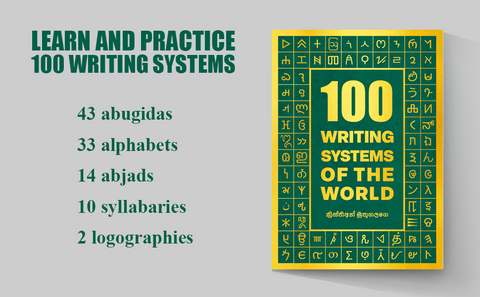Unveiling the Mysteries of the Cyrillic Script: From Slavic Origins to Global Influence
1. Script type: The Cyrillic script is an alphabet script, consisting of a set of letters that represent individual sounds. It is highly phonetic, with a one-to-one correspondence between the letters and the sounds they represent.
2. Writing direction: The Cyrillic script is primarily written from left to right, similar to many modern scripts. However, in some languages and historical contexts, such as Old Church Slavonic, it was occasionally written in a vertical or right-to-left direction.
3. Creator and invention time: The Cyrillic script is attributed to the Byzantine Greek brothers Cyril and Methodius, who were missionaries and scholars. They developed the script in the 9th century AD to facilitate the translation of religious texts into Slavic languages.
4. Time period of use: The Cyrillic script has been in use for over a thousand years and is still actively used today. Its usage spans from the Middle Ages to the present, evolving and adapting to various languages and cultural contexts.
5. Population and current usage: The Cyrillic script is actively used by millions of people worldwide. It is the official script for many Slavic languages, including Russian, Ukrainian, Bulgarian, Serbian, and Macedonian, among others. Additionally, it has been adopted by non-Slavic languages such as Mongolian, Kazakh, and Kyrgyz.
6. Usage area: Geographically, the Cyrillic script is used across Eastern Europe, the Balkans, Central Asia, and parts of the Caucasus. It has been an integral part of the cultural and linguistic identity of these regions, shaping literature, education, and communication.
Interesting Facts:
- The Cyrillic script is based on the Greek uncial script, with additional letters derived from Glagolitic, a precursor alphabet developed by Cyril and Methodius.
- It was initially created for the Old Church Slavonic language, allowing for the translation of religious texts and the spread of Christianity among Slavic populations.
- The script underwent modifications and adaptations over time to suit the phonetic requirements of different languages, resulting in variations in letter forms and pronunciation.
- The spread of the Cyrillic script can be attributed to political, cultural, and religious factors, including the influence of the Byzantine Empire, the Orthodox Church, and the Russian Empire.
- The Cyrillic script played a crucial role in the development of literacy and education in many Slavic countries, fostering national identity and cultural expression.
- In recent years, the Cyrillic script has gained recognition and usage in digital communication, with the widespread availability of Cyrillic fonts and keyboard layouts.
- The script's aesthetic appeal and distinctive letterforms have made it a subject of interest for calligraphers, artists, and typography enthusiasts around the world.
The Cyrillic script stands as a testament to the enduring power of written language. From its humble beginnings as a tool for religious translation, it has evolved into a dynamic script, influencing the cultural, social, and linguistic landscapes of diverse nations. Today, the Cyrillic script serves as a symbol of identity, communication, and artistic expression, preserving the rich heritage and traditions of the communities that embrace it.

Practice Cyrillic and other scripts with our book "100 Writing Systems of the World"!
Discover 100 diverse writing systems from around the globe in one captivating book. Practice writing different scripts with full character charts and essential information provided. Let your imagination soar on the blank right pages as you explore 43 abugidas, 33 alphabets, 14 abjads, 10 syllabaries, and 2 logographic scripts. Dive into numeral systems and even design your own writing system. Immerse yourself in the beauty and diversity of global scripts today with "100 Writing Systems of the World." Unleash your creativity and order now!
